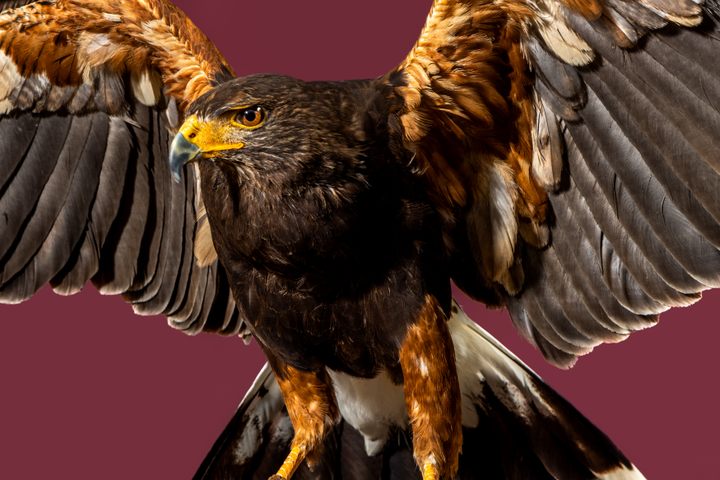
The Birds of Prey That Stand Guard Over California’s Vineyards
Without them, the state’s lucrative wine grape crop could be gobbled up by smaller birds.
Three birds of prey hunker down in the light drizzle falling on Bouchaine Vineyards in California’s Napa Valley. Rocky, a beefy Harris hawk with long white-tipped tail feathers gently preens his marbled wings while E.B., a hybrid barbary and saker falcon with a dappled white-and-brown chest, keeps his gaze trained on a row of neatly plaited grapevines. Hootbert’s eyelids flutter sleepily over his big yellow spectacled owl eyes.
The trio are the first line of defense against the invading armies of starlings, red-winged blackbirds and house finches that feast in Bouchaine’s ripening vineyards each summer and early fall. Falconer Rebecca Rosen is the general leading them into the fray.
From July through October, as the grapes ripen to maturity, small birds are drawn to their sweet, sugary juices. “You can see them in the morning moving from vineyard to vineyard to vineyard, these massive, mega flocks that can totally devastate the crop,” explains Rosen.
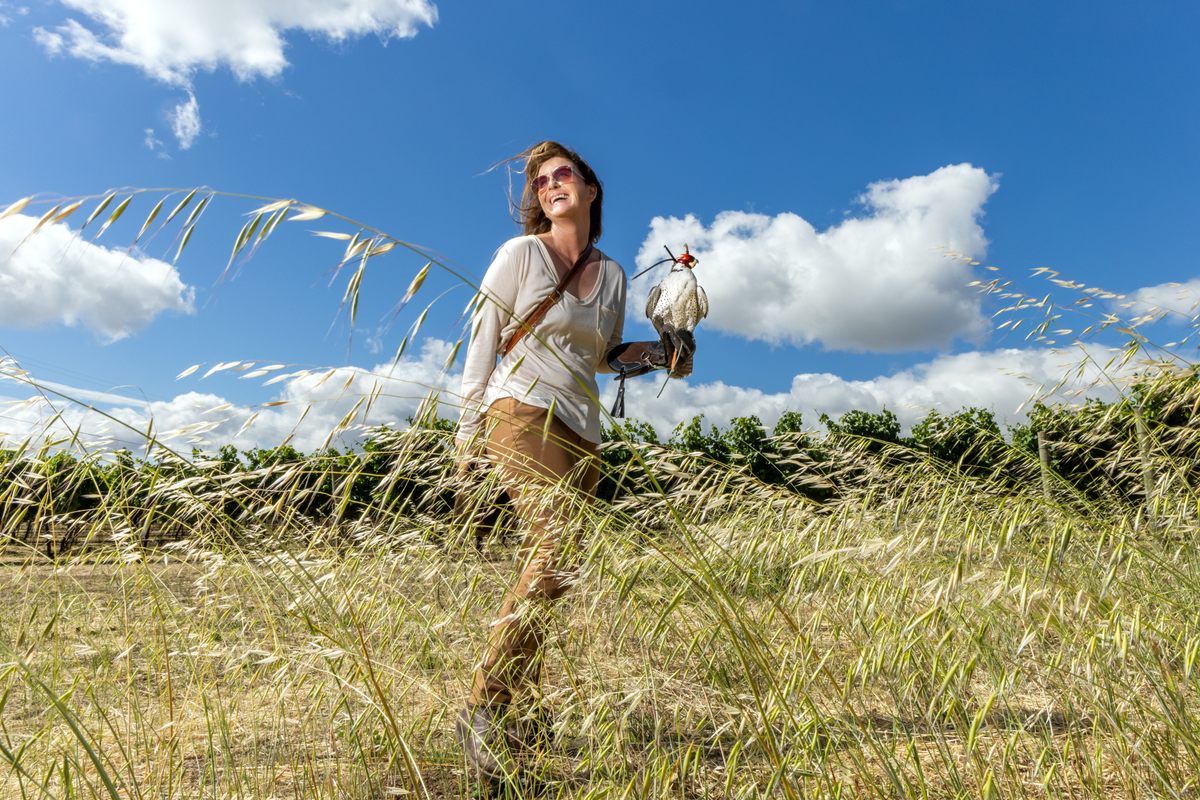
Flying the birds of prey twice a day over Bouchaine’s almost 90 acres of planted vineyards effectively scares the avian trespassers away. Just the regular presence of the sharp taloned, dagger-beaked predators is enough to keep the flocks’ ravenous hunger in check.
The destruction of wine crops by nuisance birds is an ongoing problem not just in Napa Valley, but at vineyards all over the world. Growers have devised a number of techniques to fight the flocks. Some hang strips of light-reflecting mylar in the vines or float falcon-shaped balloons above them. Others drape the vines in netting or shoot bird cannons, propane-fueled devices which frighten and disorient smaller birds with regular 125 decibel blasts. None of these methods are particularly effective, says Chris Kajani, Bouchaine’s winemaker and general manager.
“You can literally watch the birds move before the cannon goes off and return when it’s done. They know,” she says. “But birds are very, very aware of a raptor being nearby. Not only does it truly mitigate bird damage, but there’s no trash in your vineyard [from torn mylar strips], no fights with your neighbor [over the noise of the cannon], no need to use propane.”
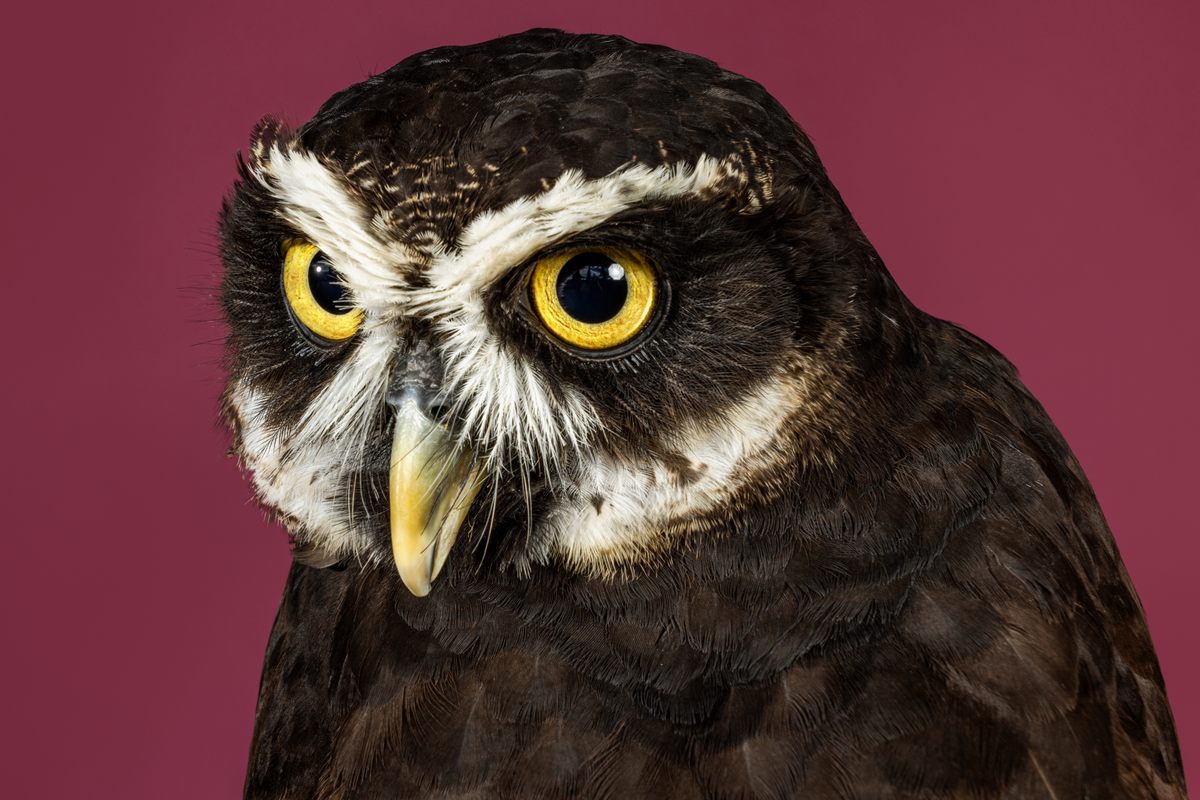
Although falcons and hawks have been gainfully employed by humankind for thousands of years, their use in the wine industry is relatively novel. The field was just beginning to develop when Rosen traded in her job as a server at a cocktail bar for a leather falconry glove in 2003. Her company Authentic Abatement now guards valuable vineyards—Napa’s wine grape crop was worth more than $476 million dollars in 2020—at more than half a dozen Northern California wineries.
Rosen trains her birds using science-based, positive reinforcement techniques, she explains back in the garden at Bouchaine. Each raptor species is a different tool in her invasive-flock fighting toolkit. “Falcons are flying projectiles,” says Rosen. “The owl is stealth, an ambush predator…hawks are impulse birds, they just kind of go for it.”
Each bird also has a distinct personality. Pillboy, a peregrine-barbary-gyr falcon cross who Rosen added to her flock in 2018, is what they refer to as a hot bird, “meaning he has tons of energy [and can be] bit squirrely to handle when he isn’t flown regularly,” she says. “We decided to name him Pillboy after a character from the show The Good Place because he has the personality of someone who has popped too many uppers.”
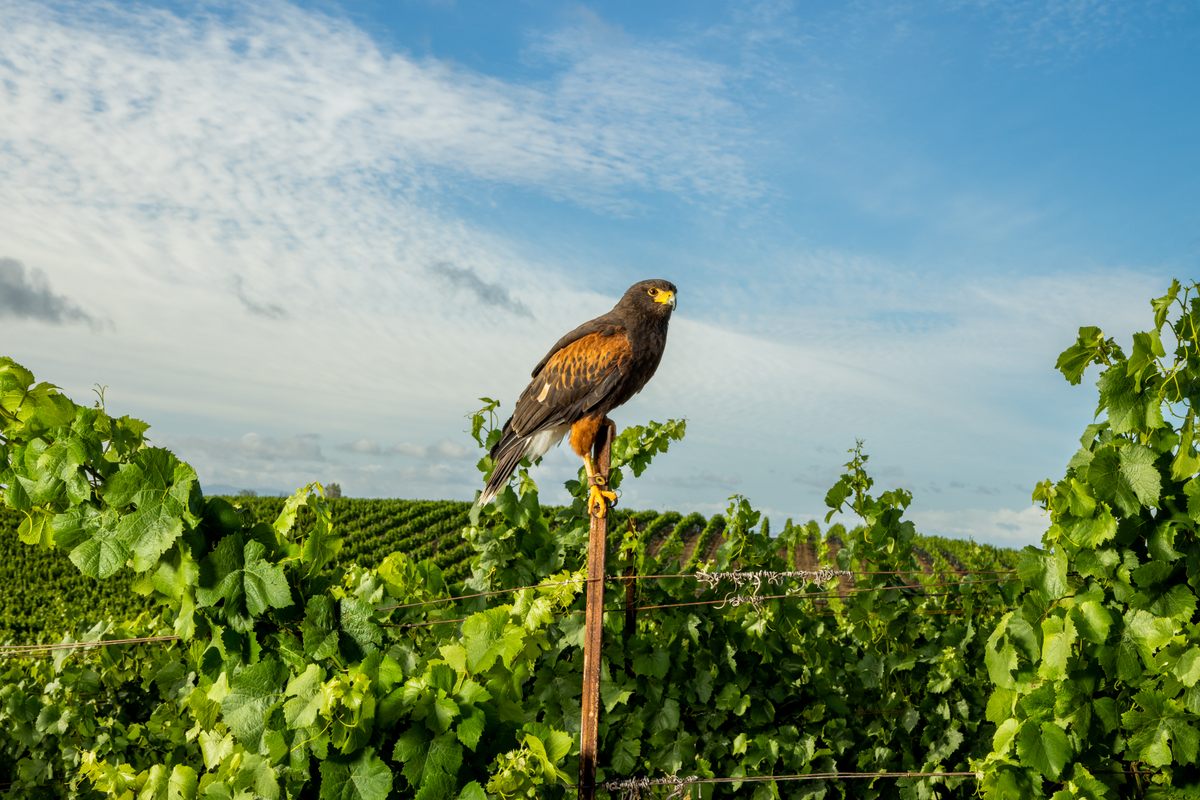
WeeMan and Mammas Boy, two Harris hawk brothers that joined the flock in 2019, used to be flown together but Rosen is working on building Mammas Boy’s confidence in the hopes she can train him to be a falconry school bird. “He stays very tight and follows behind me,” she explains. “Right now I’m trying to get Rocky to help with his shyness. Harris hawks are like dogs, they learn much quicker from each other and love flying together.”
Rosen leans down to offer E.B., the falcon, a perch on her gloved hand. E.B.’s short, butterscotch legs are built for punching prey in mid-air. His beak’s tomial tooth, a protrusion from the upper bill, severs the spinal column. She flicks her wrist and E.B. takes off circling in a wide arc around the winery. He soars for a minute, a small speck in a wide-open sky, then Rosen begins to swing a lure to draw the bird out of the clouds. A few seconds later, he lands delicately on her glove and lowers his beak to tear into a dead, day-old chick in her hand, his reward for a job well done.
The goal of falconry-based abatement isn’t to harm nuisance birds just, in the words of Kajani, to “put the fear of God into them.” When the hawks and falcons are in full working mode, they can patrol acres and acres of vineyards faster and with more agility than anything on the ground ever could.

Rosen and her team track their birds with a radio telemetry app that reports their location and speed in real time. She clocked her peregrine falcon last year at 169 miles per hour; in the wild, they can fly about 100 miles per hour faster. The technology is a “lifesaver,” says Rosen. “It’s rare to have a bird that doesn’t want to come back but [with the app] I can find them instantly. It’s cut recovery time down to nothing,”
In the garden, Rosen turns to Hootbert, the spectacled owl. She’s raised this bird since he was a chick and he’s become a part of the family. At home he watches TV with her kids (“Hootbert loves kids,” says Rosen) and when she makes the long drive to Napa Valley each season, he rides next to her on the passenger seat. The falconer lifts a dead chick and cues Hootbert to fly to her from his perch. He doesn’t move.
“He’s very patient,” she laughs. “Owls will wait for a bird or a mouse to fall asleep before they attack. They don’t want to expose themselves,” Rosen explains. Several tries later, the ornery bird lifts off, his massive eyes glinting like golden orbs. He lands nonchalantly on Rosen’s glove as if he’s doing her a favor and tears into his chick with gusto.
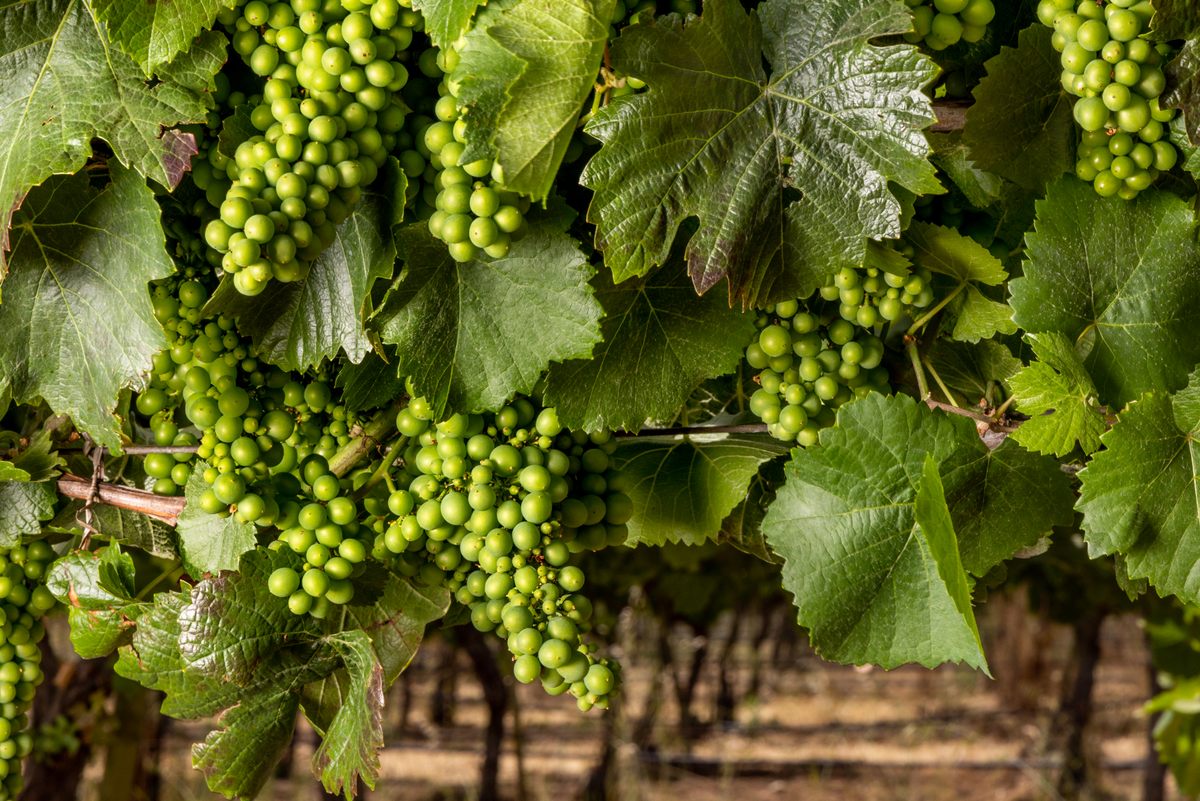
Not every vineyard experiences the same level of destruction from nuisance birds. “Some, like Bouchaine, just take the hit,” says Rosen. The nearby Carneros-appellation vineyard belonging to Cakebread Cellars is also directly in the summertime flight pattern of starlings and other small birds. That’s millions of grapes that are, literally, ripe for the picking each summer. Rosen’s falconry-based abatement has helped to keep them on the vine.
“We moved to falconry because we thought this is a great sustainable way for us to keep bird pests from being an issue,” says Aaron Fishleder, vice president of operations at Cakebread. “Having the falcons fly around, it’s beautiful and incredibly effective.” Plus, getting rid of the ugly mylar and noisy cannons benefits everyone in the community.
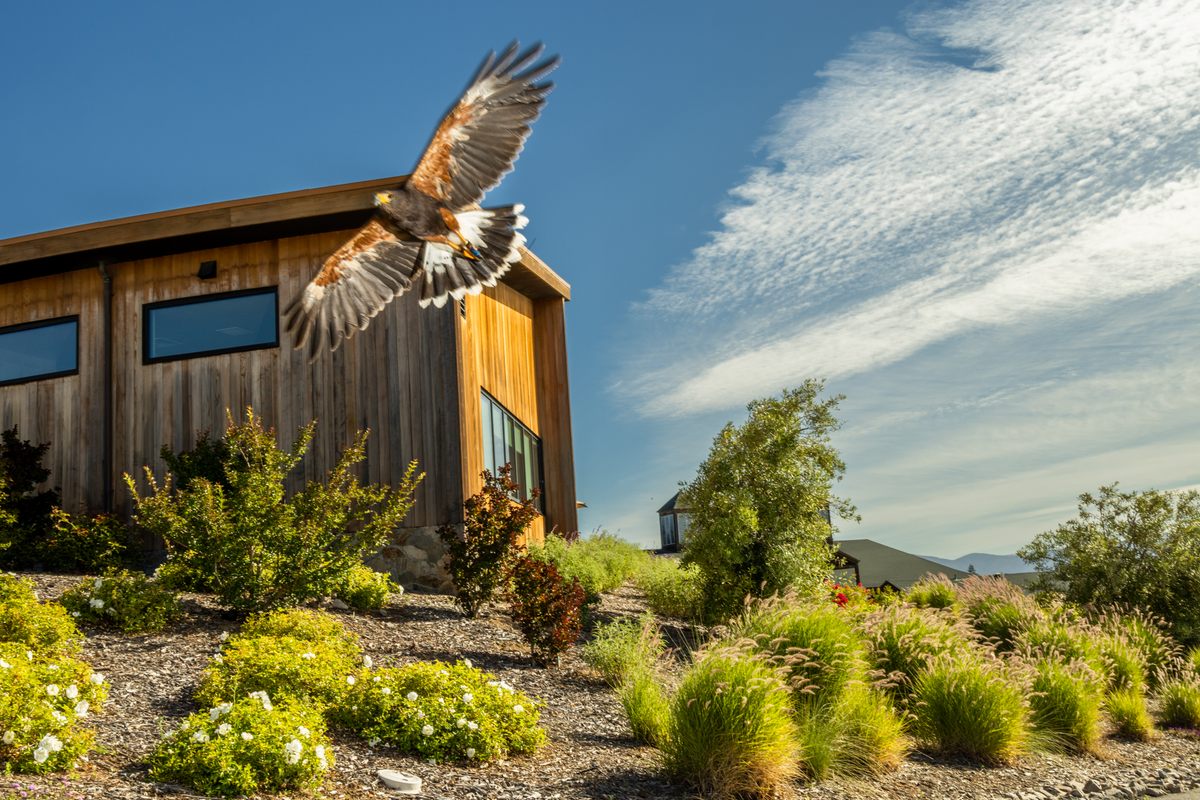
“I wish more of our colleagues around the valley would use this method,” Fishleder says. “We really love it and I’m hopeful that we’re able to help our [wine growing neighbors] inadvertently. I can’t imagine us moving away from falconry.”
On their perches in Bouchaine’s garden, E.B. and Rocky are content to quietly digest their fresh chicks in the damp morning air; Hootbert is once again falling asleep. Today was an easy one but in just a few weeks, when the grapes begin to plump with sweet sugar, they’ll be back to work full time. Until the early fall harvest, there will be no rest for the guardians of Napa Valley’s vineyards.

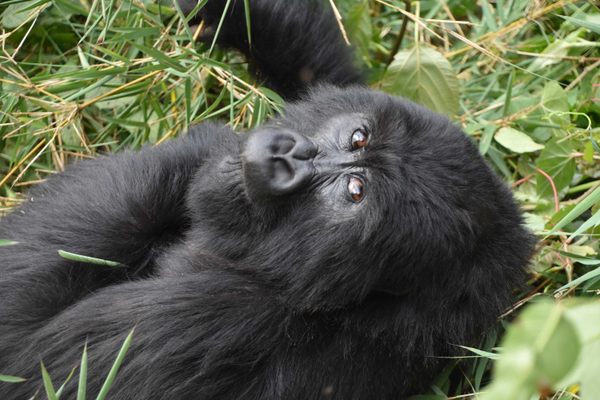

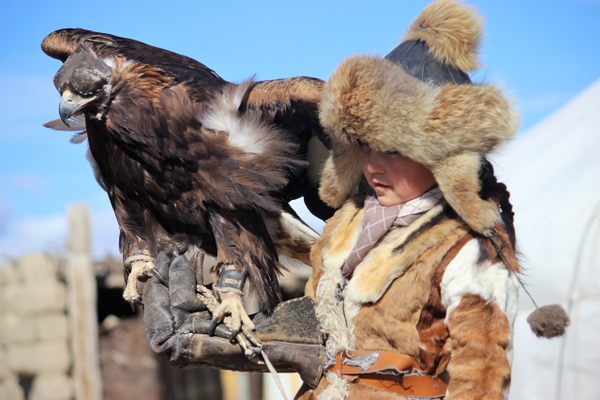
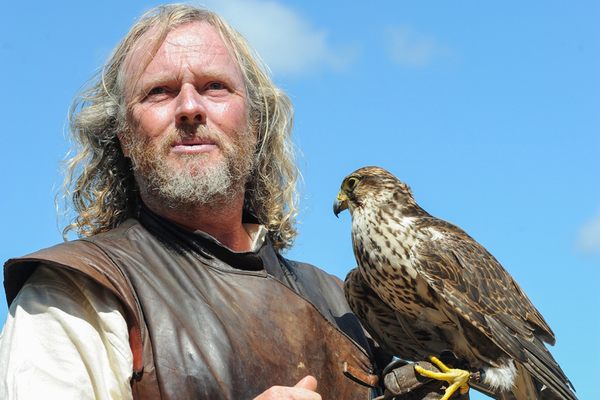
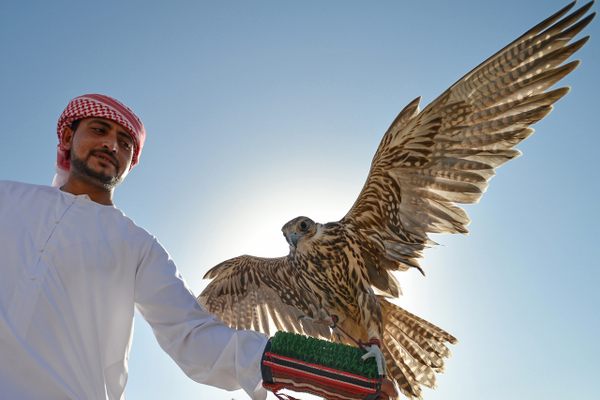









Follow us on Twitter to get the latest on the world's hidden wonders.
Like us on Facebook to get the latest on the world's hidden wonders.
Follow us on Twitter Like us on Facebook